![]() Until very recently, Google’s Nexus line and Google Play edition devices have been “pure” Android, running mostly code directly out of the Android Open Source Project (AOSP). With the launch of Android 4.4 KitKat and the Nexus 5, we began to see Google’s version of Android emerge thanks to the likes of the Google Dialer and Google Now Launcher. These applications launched a Google Experience for Nexus devices, laying the framework for how Google envisions their version of Android. Now, new design rumors have appeared that clearly show Google wants to put their own experience on top of Android, similar to what HTC is doing with Sense or what Samsung is doing with TouchWiz.
Until very recently, Google’s Nexus line and Google Play edition devices have been “pure” Android, running mostly code directly out of the Android Open Source Project (AOSP). With the launch of Android 4.4 KitKat and the Nexus 5, we began to see Google’s version of Android emerge thanks to the likes of the Google Dialer and Google Now Launcher. These applications launched a Google Experience for Nexus devices, laying the framework for how Google envisions their version of Android. Now, new design rumors have appeared that clearly show Google wants to put their own experience on top of Android, similar to what HTC is doing with Sense or what Samsung is doing with TouchWiz.

With the Android Open Source Project, hardware and software partners from around the world collaboratively work on Android’s open source code. This code is then made available for hardware partners to use as they see fit. They can choose to work with Google and use Google Play Services, or they can go their own way like Nokia or Amazon.
Going the Google route means you’re going to use Google’s services, but you’re free to use your own services too. OEMs then customize Android to their own liking, promoting their own services and creating their own unique experience – and ultimately reaping all of the benefits while they build customer relationships on top of Google’s handiwork. Samsung is probably the worst offender.
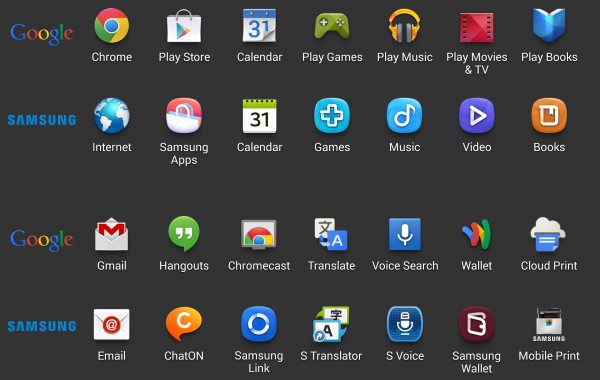
This is where the problem begins. I won’t even get into the fragmentation of applications and services issue that splits and segregates users around the Android platform because of this methodology. More importantly, Google is devoted to promoting their software experience by leveraging their array of cloud services. Up until now, Android has been Google’s platform for doing so. However, it seems we’re beginning to see a transition where Google is acting just like other OEMs and creating their own experience on top of Android.
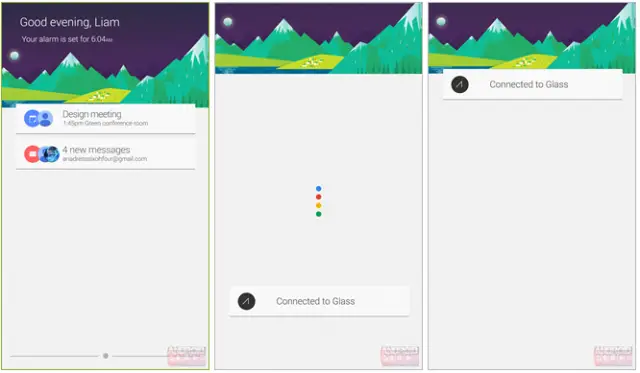
This is where those Android Silver rumors come into play I believe. Google needs to demonstrate how beneficial the entire Google Experience can be for users in a big way so that they continue to buy into the ecosystem. Google has to provide a robust enough out of box experience to convince handset makers that customers want the full Google package. The more customers that want to experience Android the Google way equates to more hardware sales – something handset makers can get behind. For Android Silver to succeed, the Google Experience needs to differ greatly from Sense, TouchWiz, and other OEM UIs.
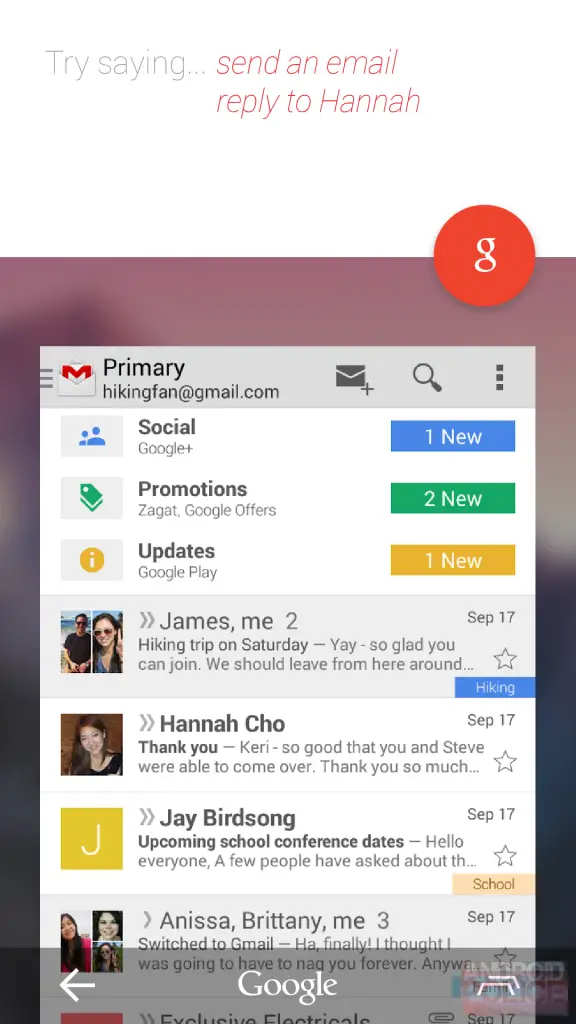
As with all rumors this size, it’s good to note that not all of these design implementations are guaranteed to make it into a final public release. At this time, Android Police is reporting that Google is working on breaking search out of it’s shell, having a revamped Recents menu, a new Notification shade, a drastically changed Home Screen launcher experience, and even Widgets could see a major usage change. If these rumors hold true, we could be on the midst of a very defining announcement in the near future. Not only will Google be pushing the full Google Experience, but they could just be using Android Silver to do it.
Maybe the first Google Experience device will launch at Google IO in June on a brand new HTC manufactured tablet? In the meantime, let us know what you think about Google’s new direction in the comments.

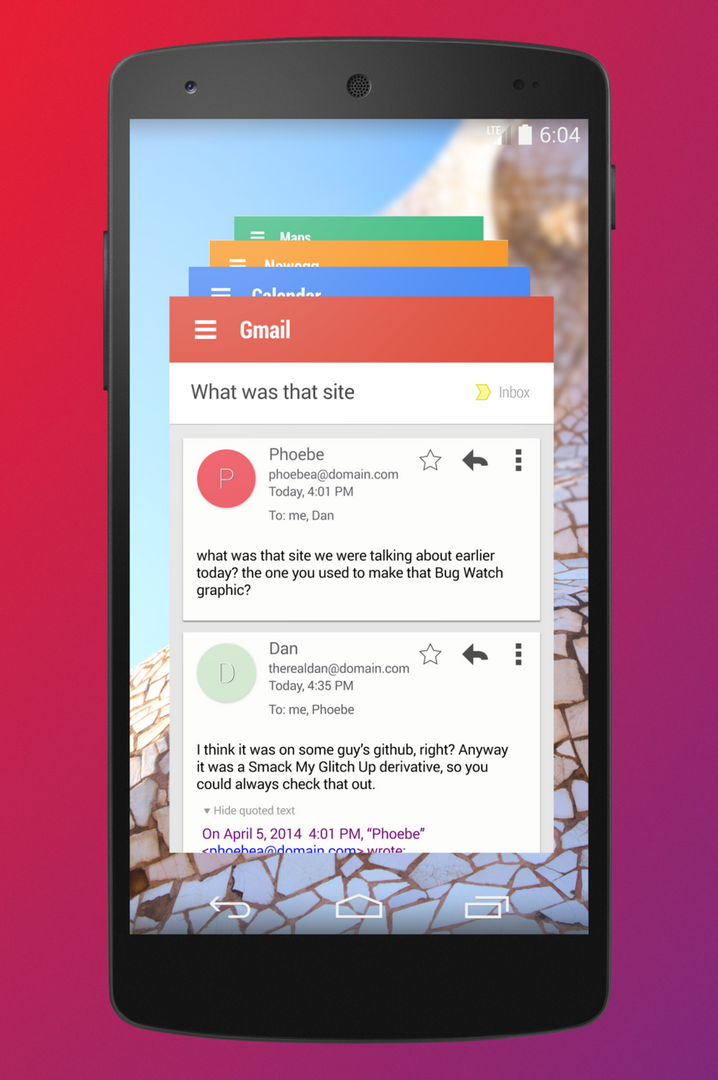

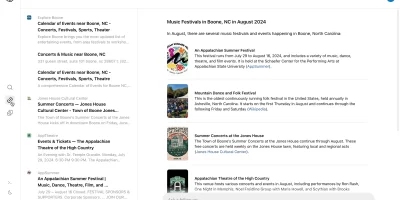

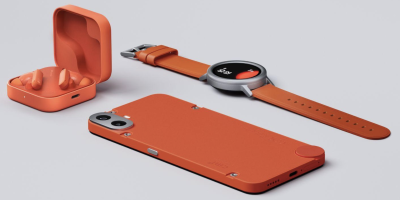
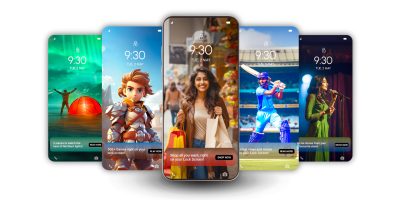





Most of the Samsung stuff was around before Google made theirs. Chat on, internet, even games music and videos. All of the stuff that Google has came after 4.0
The Nexus One didn’t have a web browser? :)
Are you retarded?
Who are you talking to?
Talk, Browser, Music, Gallery were the equivalent to ChatOn, Internet, Music and Videos before Samsung even started TouchWiz
The first phone picture reminds me a lot of what PA was doing last year with halo/”windowed” apps. Its kinda cool to see that again, I guess.
It’s very interesting I’ll say that. The whole Recents menu is really going to blow our minds I think.
Yeah, it’s cool. I can envision what it will be like.
I really wish they’d bake legitimate split screen in (like samsung). That is something I’d like to have, and probably the only thing samsung does right. I suppose I could flash omni rom, but I shouldn’t have to.
Boondocks! Nice!
Wouldn’t a google skin be considered “stock”? I say this because “vanilla” android is created by google so by them changing the look and feel of android, it shouldn’t change its “stock” status. Jelly Bean looked considerably different than gingerbread, but it is still referred to as “stock”.
Pure stock, I think would be aosp. Nexus 5 has the google now launcher which is not aosp.
but thats exactly my point. isn’t “pure stock” whatever google wants it to be? or is there a new gray area?
I believe “stock” is whatever the Android team wants it to be. Google added the Google Experience Launcher, which is not stock (at least in my opinion)
Just to expand on what you’re saying / word it different for OP:
There are two teams:
Android Team – Stock
Google Team – Not Stock
AOSP is not the same as what’s found on Nexus phones any longer. Google has been pulling apps out of AOSP and putting them on the Play Store instead – making them closed source – for a while now.
That’s a good thing for us consumers if we happen to use a phone from an OEM or carrier that has notoriously slow updates, hi Verizon! But, it also puts Google in a very controlling position, too.
Google’s Android – the Android running on the Nexus 5 is slightly different from what’s found in AOSP.
Here’s a few differences off the top of my head:
Lacks Google Apps – Gmail, YouTube, etc
Has AOSP keyboard and not Google Keyboard
Has Messaging and not Hangouts
Has AOSP Calendar and not Google Calendar
Does not sync with Exchange
Does not have Face Unlock
And probably much more
That doesn’t sound right to me. If AOSP keyboard is still intact in AOSP, then they’re not actually “pulling apps out of AOSP and putting them on the Play Store instead,” right? They’re just doing what Samsung, HTC, and others have been doing for years, they’re creating their own, separate apps that offer added functionality.
No pulling.
He means to say that google “forked” development of each app. Most of their closed source apps require using Google Play services, which forces a vendor/oem to “buy” into their own walled garden. That, or reimplement all the APIs like Amazon has (tried).
Brian, that’s fine, but forking is very different from pulling and putting. The original apps have remained in AOSP and development on them has still continued.
Also, this isn’t really anything new. Google has been providing its own experience with their own apps and launcher for a while now. The Nexus 5 was already a Google Experience phone.
What’s undoubtedly coming in I/O is just the next iteration of that.
*grey*
Please don’t correct me when I spelled “gray” correctly.
One thing I definitely don’t miss giving up Samsung (for the time being, at least) is not all that frakkin’ bloatware. I mean. To have Android and then offer ALL of Google’s apps and then ALL of your own versions of Google’s apps? C’mon. Do enough people even use those apps to be worth it? I would much prefer use Google services as it doesn’t tie me to a specific OEM and then I can jump ship when the OEM makes me want to punch a baby in the face (the GS5).
But anyway… Hmmm, I’m not quite sure what to think about Google making their own skin for their operating system. What in the holy hell is that about?
If and when they release it I hope they’ll offer an app download in Play so that anyone can test it out.
I wouldn’t even really care about the bloat if they’d quit gimping their devices at 16gb of storage, with an SD card slot that well, maybe kinda sorta works for transferring apps in Kikat.
Whatever Google or anybody else is doing, I’ll probably just run Nova Launcher on top anyway. Just like with that huge search box on the home screen of the Google launcher that I can’t delete, I imagine the thrust of Google’s motivation is to shove Google Now and their other services down people’s throats, regardless of whether or not this actually adds any practical benefit to the end user. It’s like some social networks that insist on showing you ‘what’s trending’, whether you want to see it or not. I call these ‘features’ that you can’t turn off ‘anti-features’.
My old boss called them suck features.
I’m wary of these changes now, but I’m betting that once it’s announced at IO I’m gonna be first in line.
Google Android further deviates from AOSP?
Definition of the stock Google experience further evolves.
Im just going to wait till IO before i start criticizing some aspect of their new launcher lol.
More fragmentation?
Only if you think of it that way. I wouldn’t call the HTC M8 and Samsung Galaxy S5 fragmented from one another – they’re just different OEM’s takes on Android 4.4 KitKat. But, ultimately it’s going to create another “OEM UI” that differs from others on the market. That’s where Android Silver comes in though. OEMs can choose to participate. We really just don’t know what’s going to happen. It’s all a guessing game for now.
It’s going to be awfully difficult to unpick “Android” from the UI in the minds of most consumers. Ok, you have TouchWiz and Sense, but they tend to avoid radical changes like no home button.
Google seem to swing from one direction to the other like a pendulum. Android HAD a dedicated search button, then they remove and then they add it back – smacks of no overriding vision, just the whim of whoever is in charge at the time.
As you said, a guessing game for now – we’ll see what eventually emerges.
Fragmentation refers to different versions of an OS, such as Microsoft having XP, Vista, Win 7, Win 8, etc all being used. For Android, it would be GingerBread, Icecream Sandwich, JellyBean, KitKat, etc. It does not refer to user interfaces. Diferent UI’s is differentiation not fragmentation. Fragmentation is now essentially a slur, used by Google competitors/antagonists against them, often when they are just as guilty of fragmentation themselves (I’m looking at you Microsoft).
I like the idea, Googly themes are nice.
Still waiting on the Nexus 6 and Note 4 to decide which mobile future I want.
No one + one or lg g3 ?
I think you’re missing the even bigger picture. I suspect that Google wants the Google Experience to be a completely platform-agnostic way for people to use Google services. Not merely to try and sew the Android ecosystem more tightly together; but also such that people can move from Samsung to Apple to HTC to “whatever”, and never have to worry about leaving their daily arsenal of core Google-provided technologies behind. Their ultimate goal is for people to interact with the Google Experience day in and day out. The phone becomes a tool to access the Google Experience. I doubt Google cares much in its long term strategy whether Android continues to dominate the market as long as they can make Google services ever-more-ubiquitous and indispensable.
I believe that’s right too. You should be able to go from one phone to another and have the same software experience. If Samsung comes out with a 4K display and you want that, fine. Next year HTC comes out with a 100MP camera and you want that, fine. You should be able to switch and not feel like you’re going to have to learn a whole new OS.
Why should I be able to go from phone to phone with the same software experience and not have to adapt? If I wanted that, I’d get an iPhone. And we already know where the approach of any hardware, one software experience leads to – the Windows PC.
I believe that Android is all about choice.
I don’t believe that any one company controlling the entire user experience is good for innovation.
The new approach in ICS where Google made their apps contact-centric was not new – that was the HTC approach since Sense 1.0 (and has been the whole point of Sense, it’s not just about the “laggy, bloated UI”). I made the choice to move away from faster, stock Android to that feature in 2010, two and a half years before Google got there. I had quick settings from my pull down status bar, stock HTC, in 2011, two years before Google came out with it. The list goes on with examples from the other OEMs as well. The OEM “overlays” are more than just UIs.
Competition breeds innovation, and software is no exception.
“Samsung is probably the worst offender,” as you said in the article, is so far afield from the point of why Google fostered the Open Handset Alliance that it’s not even wrong.
If you think that iOS and the Windows phone are enough competition to spark Android innovation, more power to you.
Both of those two others are years behind what I enjoy every day on my non-stock Android.
Android has always been about choice. Competition breeds innovation, innovation is good for us. Let the OEMs compete by providing different user experiences, not just hardware.
Vive la différence.
And btw – you can already get the same thing going between different hardware OEMs by going with the Google Experience phones, as you well know. It’s possible that those are not the top sellers because people appreciate the other choices in addition to those.
I assume when you say Google Experience phones can already be bought that you mean Google Play edition phones. The reason they aren’t top sellers is because average customers do not buy phones from Google Play. Tech geeks do. Your average person walks into a carrier store.
You’re not the average person. You don’t know the pains of the average consumer buying an HTC phone then buying an LG phone next and being lost at where to find certain things or even how to accomplish simple tasks such as group messaging.
My aunt for example, a very accomplished lawyer, something that’s very intelligent, had a hell of a time doing group messaging between platforms because both OEMs had their own take on text messages.
That’s a pain point for Android. That’s a pain point that makes the average person say that Android is hard to use.
Competition and choice breed innovation – I’ll agree with that. Just like the Moto X. They released how many new and innovative features with a stock Android experience? That right there is what Android Silver is about a near stock experience. OEMs can still add their own flavor of customization like active display, trusted devices, or always on listening microphone.
Please don’t tell me that I don’t know what average consumers go through like you do. What? You’re the only person with an aunt?
After you’ve helped tens of thousands of people with Android as I have in the forums, get back to me.
I’ll wait.
“Why should I be able to go from phone to phone with the same software experience and not have to adapt?”
Why not?
“I believe that Android is all about choice.”
My too, and I want a seemless experience.
“I don’t believe that any one company controlling the entire user experience is good for innovation.”
No one is suggesting that. This rumor is about Google making stock devices from major manufacturers a little more consistent. So what? Mod it, or just put a new launcher on.
Unless I’m misunderstanding something here, there’s nothing about this that even implies that you won’t be free to buy a vanilla Android phone (even those without Google’s input) or put a new ROM on your Google phone.
It really changes nothing other than limiting carrier bloatware for some devices.
The discussion is about ultimately having just one unified interface. No more Sense, no more TouchWiz, no more choice.
Just like an iPhone.
“And we already know where the approach of any hardware, one software experience leads to – the Windows PC.”
Yes, exactly the Windows PC! Still the best overall OS software platform to date. Anyone familiar with Windows XP to Windows 7 (and with some soft mods Windows 8) can use any PC without much difficulty or learning curve. Manufacturers are still able to add their own “bloatware” but it can easily be removed, and if the experience doesn’t work for you or you need to tweak some things it is easily done by any slightly tech savvy user. If Android were to follow suit, then your average everyday user would be able to choose the hardware that they want without the fear of having to re-learn everything all over AGAIN. As for “techy” guys, like myself, who like to f$#k with things, we would still be able to mod the same as we do now. The best of both worlds… Just my 2¢
So, why not the Windows phone then?
What works best on a PC doesn’t necessarily equate to phones.
Cheers!
I think you’re dead on. If you watch Duarte’s recent talk with Topolsky, he talks about the concept that mobile is dead and that continually, customers want one product or service across ask of their devices. I believe we’re at the point where Android and Chrome start to merge. Chrome becomes the cross-platform vehicle for developers to reach users through Android, iOS, OS X, and Windows. Android remains the best window to Google services, but Chrome works to sync services across devices no matter who made them.
I agree with Duarte, disagreed with Topolsky.
Duarte asks the key question – do you have your goals right? Start with the problem.
Topolsky goes on to answer with the merging of Chrome and Android – but is that goal right? What problem does it solve?
Chrome is all about operating in the cloud.
I’m not sure that’s right for Android. It’s very right for Google – maybe less so for us users.
What do you have that is not syncing successfully right now between devices? That you can’t get an app or service for?
“the merging of Chrome and Android – but is that goal right? What problem does it solve?”
Right now, there are a hundred things my tablet (Android) can do that my Chromebook can’t, thanks to Android’s awesome app ecosystem. Meanwhile, there is NOTHING my Chromebook can do that my Android tablet can’t.
Merging the 2 turns the hobbled-netbook feel of Chromebooks into a more ‘real computer’ feel and functionality.
Wasn’t the Nexus 5 the first Google Experience device?
Google has redefined the term “Google Experience” over the years. After the Nexus One, Google started pitching “Google Experience” devices to counter Verizon’s ploy of loading up Android phones with Bing as opposed to Google as the default search provider and app.
I’ll change my question:
Wasn’t the Nexus 5 the first Google Experience device by Google’s current definition?
Sure was. I believe that definition is about to get further refined.
I think that the consumers should have more of a say. When you activate you phone it should give you choices, do you want vanilla android like a next phone, or do you want that OEM takes on Android. Then depending on what you choose, it deletes the other stuff that does not go with it. It could be something as simple as plugging your phone into your computer, going to the OEM web site and doing a simple update.
Then if you wanted to try the other, plug your phone back in, and go to the website and download that version. You could backup your phone on your desktop to transition back.
If it’s all wrapped around the pastels and primary colors of Google interfaces to date I think I will have to puke. In addition I hate many of Google’s recent changes. I hate Hangouts and disable it on my phone. I am suspicious of most cloud apps and their abuse of my data so I am very selective and disable anything I don’t trust. If I’m forced to all Google cloud apps I may as well get an old fashioned dumb phone as I won’t be cornered into using anything I can’t root and customize.
sheep
Id love to see this as something that could be enabled on any phone as a way to get around some of the crap that Samsung puts on their phone. I am tired of people complaining about how their “droid” calendar, voice search, etc is crap because they were using the Samsung ones instead of the Google ones.